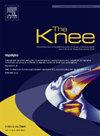全膝关节置换术后膝关节疼痛、满意度和翻修
IF 2
4区 医学
Q3 ORTHOPEDICS
引用次数: 0
摘要
背景:全膝关节置换术(TKA)中髌骨表面置换仍然存在争议。我们进行了一项大型队列研究,以评估进行和未进行原发性髌骨置换的患者之间的疼痛、功能和翻修风险。方法2005-2024年共鉴定10846个主要tka。我们在第一年和第二年通过牛津膝关节评分问题和患者满意度确定髌骨相关疼痛和功能。我们使用逻辑回归来估计髌骨状态与这些结果之间的关系。我们确定了改良TKA,并使用Cox比例风险模型来估计其与髌骨表面置换术的关系。结果约78%的患者在TKA期间进行了原发性髌骨置换,96%的置换髌骨采用后稳定膝关节系统,而48%的未置换髌骨采用后稳定膝关节系统。我们观察到髌骨状态对髌骨相关疼痛和功能没有影响。髌骨相关疼痛在第一年的调整优势比[OR]为0.94(95%可信区间[CI] 0.79-1.12),髌骨相关功能问题的调整优势比[OR]为0.98 (95% CI 0.78-1.22)。5年随访修订的风险比为0.75 (95% CI 0.50-1.12)。结论行髌骨置换与不行髌骨置换的患者术后头两年髌骨相关疼痛和功能预后相似。未表面修复的髌骨有更高的翻修率,尽管这没有统计学意义。一小部分髌骨未置换的患者可能会有不良的结果,但这些患者也可能已经进行了翻修,以减少原发性髌骨置换可能出现的膝关节前侧疼痛。本文章由计算机程序翻译,如有差异,请以英文原文为准。
Postoperative knee pain, satisfaction, and revision after total knee arthroplasty with and without primary patella resurfacing
Background
Patella resurfacing during total knee arthroplasty (TKA) remains controversial. We performed a large cohort study to assess pain, function, and revision risk between patients with and without primary patella resurfacing.
Method
We identified 10,846 primary TKAs in 2005–2024. We ascertained patella-related pain and function from Oxford knee score questions and patient satisfaction at year one and two. We used logistic regression to estimate the association between patella status and these outcomes. We identified revision TKA and used Cox proportional hazard models to estimate its association with patella resurfacing.
Results
Around 78 % of patients had primary patella resurfacing during their TKA, 96 % of resurfaced patellas were done with a posterior-stabilized knee system versus 48 % of unresurfaced patellas. We observed no difference in patella-related pain and function by patella status. Patella-related pain had an adjusted odds ratio [OR] of 0.94 (95 % confidence interval [CI] 0.79–1.12) for resurfaced patellas at year one, the OR for patella-related functional issues was 0.98 (95 % CI 0.78–1.22). The hazard ratio for five years of follow up for revision was 0.75 (95 % CI 0.50–1.12).
Conclusion
Patients with and without primary patella resurfacing had similar patella-related pain and functional outcomes in the first two postoperative years. Unresurfaced patellas had higher revision rates, although this was not statistically significant. A small subset of patients with unresurfaced patellas may have unfavorable outcomes, but these patients may also have been revised in an attempt to reduce anterior knee pain that would have been present with primary patella resurfacing.
求助全文
通过发布文献求助,成功后即可免费获取论文全文。
去求助
来源期刊

Knee
医学-外科
CiteScore
3.80
自引率
5.30%
发文量
171
审稿时长
6 months
期刊介绍:
The Knee is an international journal publishing studies on the clinical treatment and fundamental biomechanical characteristics of this joint. The aim of the journal is to provide a vehicle relevant to surgeons, biomedical engineers, imaging specialists, materials scientists, rehabilitation personnel and all those with an interest in the knee.
The topics covered include, but are not limited to:
• Anatomy, physiology, morphology and biochemistry;
• Biomechanical studies;
• Advances in the development of prosthetic, orthotic and augmentation devices;
• Imaging and diagnostic techniques;
• Pathology;
• Trauma;
• Surgery;
• Rehabilitation.
 求助内容:
求助内容: 应助结果提醒方式:
应助结果提醒方式:


